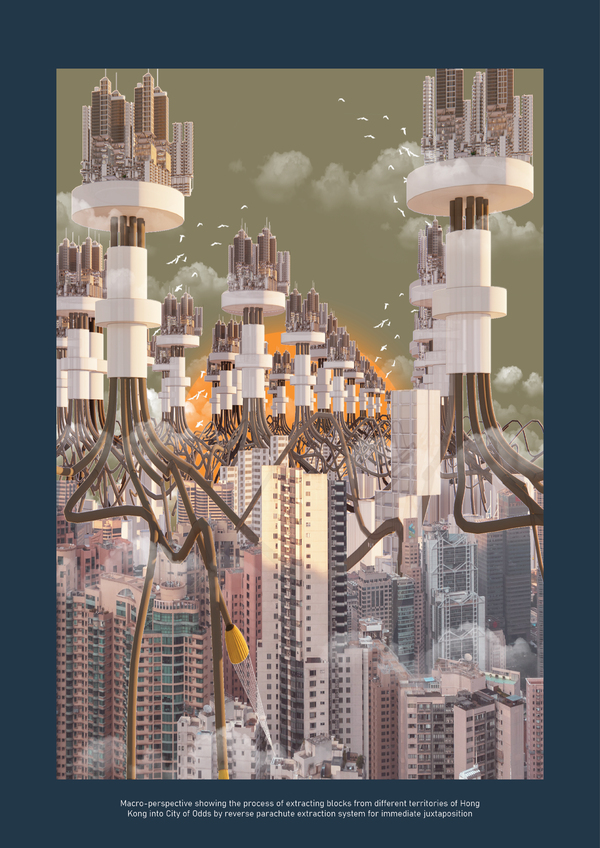'City of Odds', my final year thesis, is a fictionalised city that narrates unequal territories in immediate juxtaposition in both micro and macro scale. Inspired by techniques including mapping, overlaying frames, storytelling and augmented reality, this project uses immediate juxtaposition as an over-arching design methodology to draw attention to spatial inequality among the social hierarchy, i.e. the marginalised VS. privileged.
City of Odds is not providing the solution to the problem, but it illustrates the potentials of public spaces in accommodating basic amenities that not only the privileged, but the marginalised and all human deserve.
City of Odds - When unequal territories are narrated in immediate juxtaposition
With architecture as the agent, how can we narrate unequal territories in immediate juxtaposition to reveal and respond to spatial inequality?
Welcome to City of Odds
We have extracted different territories of each of the city occupants from Hong Kong and have brought them into City of Odds.
The city occupants are categorised into upper-level and lower-level residents (Upper-level residents: apartments owners, white-collar workers; Lower-level residents: wanderers (street vendors, street sleepers, cage home owners, McRefugees), foreign domestic workers).
Through compiling different territories into a fundamental block in City of Odds, this project uses immediate juxtaposition to reinforce the severity of spatial inequality which is often overlooked in our built environment.
Growing from a fundamental block into an urban scale, City of Odds gives the opportunities to re-imagine and construct public space into their desired forms, that is, the spaces in between adjacent blocks, upper-level residents strive to live their lives as exactly as they were in Hong Kong; lower-level residents have many more opportunities to adapt the city to their needs.


